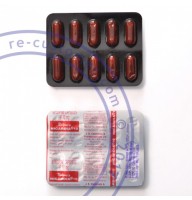Nifedipine is a medication widely used in the treatment of hypertension and angina, and it is classified as a calcium channel blocker. The generic name for this medication is indeed nifedipine, which is the same as its brand name. This might seem unusual because many drugs have different generic and brand names, but in this case, nifedipine is the generic term used to identify the drug regardless of the brand under which it is marketed.
Nifedipine belongs to a class of drugs known as dihydropyridines. This class is characterized by its action on the calcium channels in vascular smooth muscle, leading to vasodilation. By inhibiting calcium entry into these cells, nifedipine effectively reduces arterial pressure, making it useful for managing high blood pressure. It also helps in reducing the frequency and severity of angina attacks by improving blood flow to the heart muscle.
The history of nifedipine dates back to its development in the 1960s, and it became one of the first dihydropyridine calcium channel blockers to be introduced to the market. It has since been a significant component in the management of cardiovascular conditions due to its efficacy and relatively well-tolerated side effect profile.
Nifedipine is available in various formulations, including immediate-release and extended-release tablets. The immediate-release formulation acts quickly, typically starting to work within 30 minutes to 1 hour, making it suitable for acute episodes of angina or for initial blood pressure management. On the other hand, the extended-release formulation is designed to provide a more gradual and sustained effect over a 24-hour period, which is useful for ongoing hypertension management.
Despite being marketed under different brand names, the active ingredient remains nifedipine. Some well-known brand names include Adalat and Procardia, though the choice of brand may vary depending on the country and the manufacturer. The generic form is often preferred due to its cost-effectiveness while offering the same therapeutic benefits as the branded versions.
Patients and healthcare providers should be aware that, although nifedipine is effective for controlling high blood pressure and angina, it is essential to use it under medical supervision. Dosage adjustments and monitoring are crucial to optimize therapeutic outcomes and minimize potential side effects. As with all medications, it is important for individuals to follow their healthcare provider’s instructions and report any adverse reactions or concerns.
In summary, the generic name for nifedipine is simply nifedipine. It is a key medication in managing hypertension and angina, with its generic name reflecting its active ingredient across various brand formulations. Understanding the role and function of nifedipine, along with its appropriate usage, can help in effectively managing cardiovascular conditions while ensuring patient safety and treatment efficacy.

